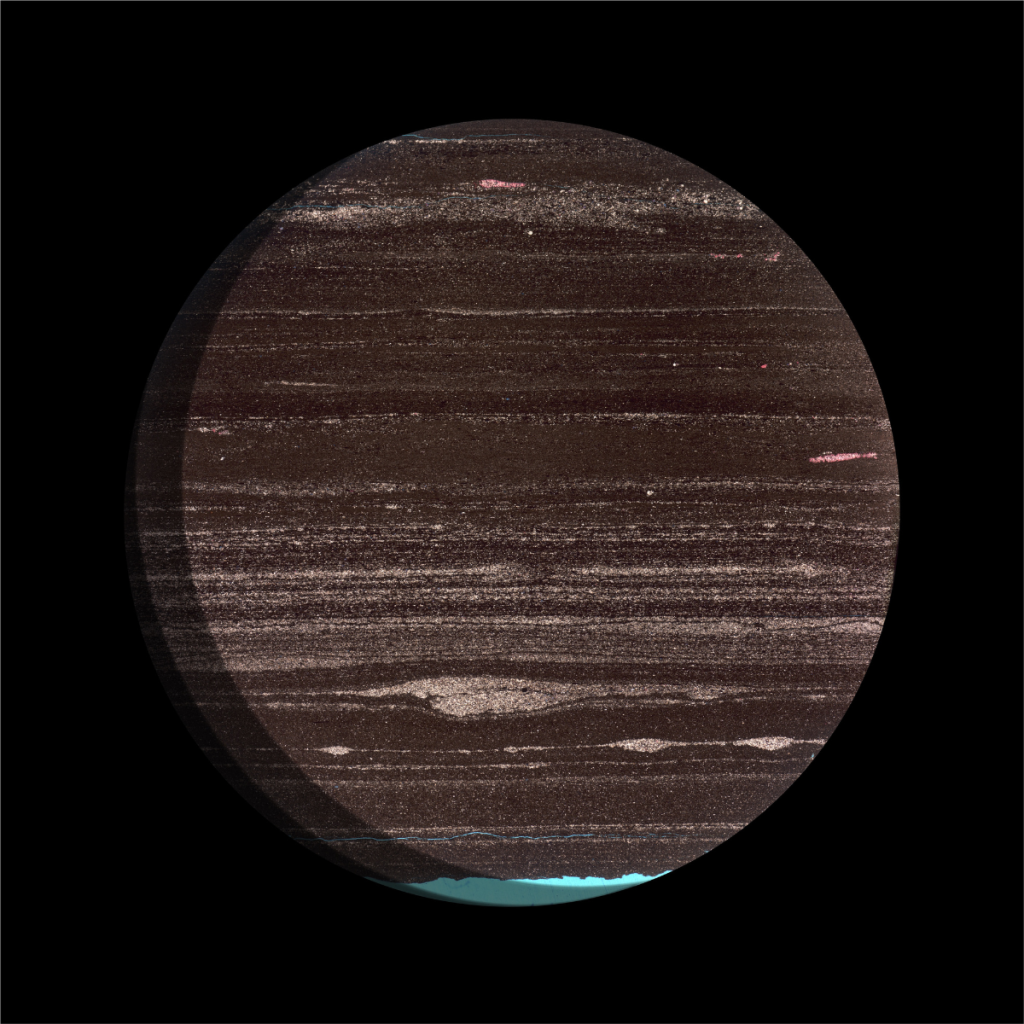Semi-finalist 2025
| Submitted by: | Sara Biddle |
| Department: | Earth + Atmospheric Sciences |
| Faculty: | Science |
At first glance, this image might evoke a distant planet swirling in space. Look closer. It’s a photograph through a microscope, revealing a mere one-centimetre fragment of a 100-million-year-old rock. This illusion is a beautiful example of the scope of information that can be obtained through studying ancient deposits. The simple evaluation of a small sample can provide a wealth of information about what Earth was like at the time a rock was forming. My research focuses on analyzing small rock samples, like this one, to uncover Earth’s past oxygen fluctuations.
This rock sample in particular reveals alternating layers of sand (light speckled) and mud (dark brown). While some layers are sharply defined, others exhibit a ‘fuzzy’ texture. That fuzzy appearance is the result of microscopic worms moving through the sediment and blurring the layers 100 million years ago – an intriguing finding, as this was thought to be a time of widespread oxygen depletion, limiting the ability for animals to breathe. This microscopic evidence suggests that while oxygen levels were insufficient for large sediment-dwelling animals, they remained adequate for minuscule worms.
Was your image created using Generative AI?
No.
How was your image created?
A rock core was originally collected from 1.5 kilometres underground just northwest of Calgary during a petroleum exploration drilling mission. A small sample was then prepared into a thin section (slicing the rock thinner than a human hair and mounting it on glass) to examine the finer details. The thin section was photographed using a Nikon CoolScan Thin Section scanning machine in the Digital Imaging Facility in the Earth and Atmospheric Sciences Department. Finally, the image was cropped and enhanced in Adobe Illustrator.
Where is the image located?
The image is from a drill core originally taken just northwest of Calgary. The photo itself was taken in the Digital Imaging Facility in the Earth and Atmospheric Sciences building.

